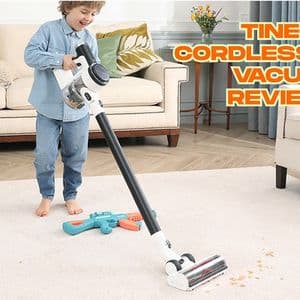When it comes to keeping your home spotless, a stick vacuum cleaner can be a game-changer. Compact, lightweight, and easy to maneuver, they’re designed for convenience without sacrificing cleaning power. But how do you choose the one that fits your needs? Let’s break it down.
Why Choose a Stick Vacuum Cleaner?
First things first—why not stick with your traditional upright or canister vacuum?
Stick vacuums offer a unique combination of portability and performance. They’re perfect for apartments, smaller spaces, or homes with multiple floors. Most modern models feature cordless designs, making them ideal for quick, hassle-free cleaning sessions.
Many homeowners appreciate that stick vacuums are easier to store and carry compared to bulkier machines. Plus, their sleek build often means they can fit into tight spots, giving you more flexibility in your cleaning routine.
Cordless Convenience and Battery Life
Let’s face it—tangled cords and limited reach can make vacuuming a chore. That’s where a wireless vacuum cleaner shines. By removing the cord, you gain complete freedom of movement, allowing you to clean without constantly switching outlets.
Battery life is key here. Look for models with a runtime of at least 30–40 minutes for general cleaning. Premium options can run up to an hour on a single charge, often with swappable batteries to extend cleaning sessions.
Suction Power and Performance
Power matters, especially if you have thick carpets or pets. Suction strength is usually measured in air watts or pascals. Higher numbers generally mean better debris pickup, but efficiency also depends on nozzle design and motor quality.
For hardwood floors, a moderate suction level works well to avoid scattering debris. For carpets, especially high-pile, opt for higher suction and specialized brush rolls. Adjustable power settings can help you tailor performance to different surfaces.
Filtration and Dust Management
Good filtration isn’t just about keeping your floors clean—it’s also about improving indoor air quality. Many top-tier models come with HEPA filters, which trap fine dust, pollen, and other allergens.
Dustbin capacity is another consideration. Smaller bins may require more frequent emptying, but they also keep the vacuum lighter. If you have pets or a larger home, a bigger bin might be worth the added weight.
Attachments and Versatility
Want more than just floor cleaning? The best models come with attachments for various tasks—crevice tools for corners, motorized mini brushes for upholstery, and soft rollers for delicate floors.
Some stick vacuums can convert into handheld units, making them perfect for furniture, car interiors, and stairs. The more versatile the vacuum, the better value you get for your investment.
Weight and Ergonomics
Vacuuming shouldn’t feel like a workout. Lightweight designs are essential, especially for people who need to carry the device up and down stairs. A balanced design with comfortable grips can make a huge difference in how enjoyable—or tedious—your cleaning sessions feel.
Pay attention to where the motor and dustbin are positioned. Top-heavy designs may be harder to maneuver, while well-balanced ones feel more natural in hand.
Noise Levels
Nobody wants a vacuum that sounds like a jet engine. If you have young children, pets, or close neighbors, check the noise rating before buying. Many modern stick vacuums operate under 70 decibels, which is quieter than traditional models.
Some even feature a “quiet mode” for light cleaning, reducing noise without compromising too much on performance.
Read more: https://toolhome.org/good-vacuums/
Price vs. Value
Price is often the deciding factor, but it’s worth looking at value over cost alone. Budget models can perform surprisingly well for light cleaning, while premium models offer advanced features like smart sensors, self-adjusting brush rolls, and enhanced filtration.
Before deciding, think about your specific needs—do you clean daily or weekly? Do you have pets, allergies, or multiple flooring types? Matching the vacuum’s capabilities to your lifestyle ensures you get the best return on investment.
Maintenance and Longevity
Even a good vacuum cleaner needs regular upkeep. Empty the dustbin frequently, clean the filter according to the manufacturer’s instructions, and check for tangled hair in the brush roll.
Rechargeable batteries have a limited lifespan, typically lasting 2–5 years depending on usage. Choosing a model with replaceable batteries can extend the vacuum’s life considerably.
Energy Efficiency
While most people focus on suction and runtime, energy efficiency is worth considering. A more efficient motor consumes less power and may produce less heat, helping to prolong the vacuum’s lifespan.
Eco-friendly models are becoming more common, with manufacturers designing motors and batteries that deliver strong performance without excessive energy use.
Final Thoughts
Choosing the best stick vacuum cleaner is about balancing power, convenience, and long-term value. Take time to evaluate your cleaning needs, flooring types, and desired features.
Remember, a well-chosen vacuum should make cleaning easier, not more complicated. Whether you want a versatile model for every surface or a lightweight option for quick touch-ups, there’s a solution that can meet your expectations.
By following these guidelines, you’ll be better equipped to invest in a vacuum that works for your home—one that delivers on performance and lasts for years. After all, the best cleaning tools are the ones you enjoy using regularly.




















